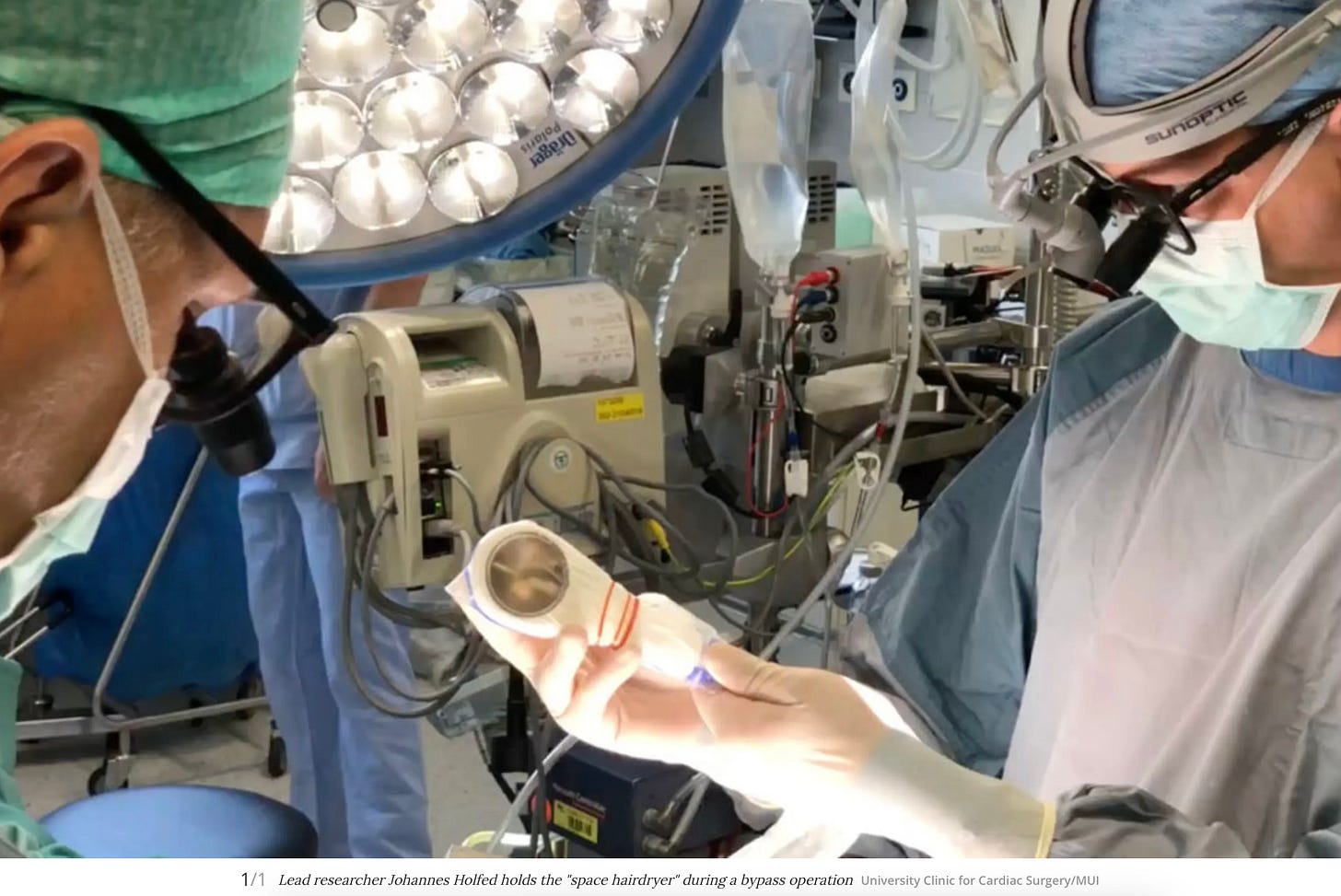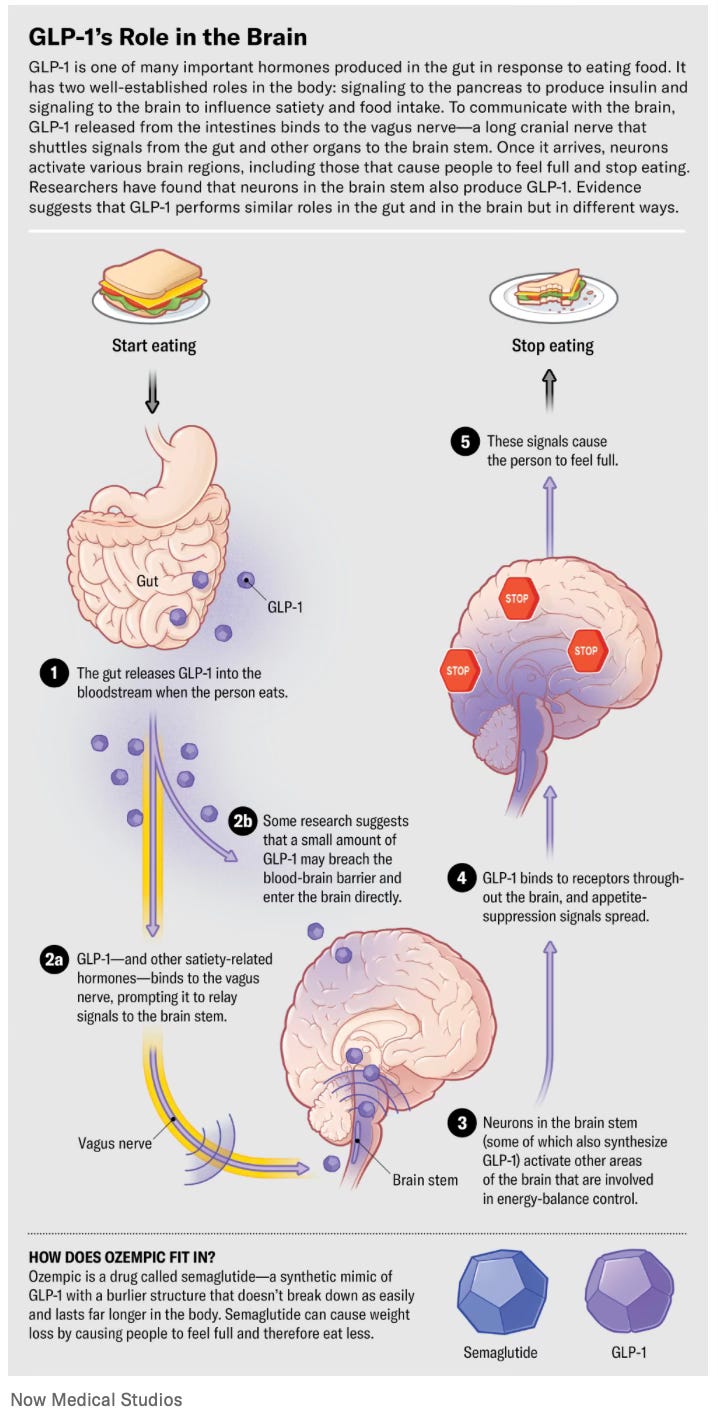This week we will look at a novel solution to the growing problem that fast fashion is creating i.e. the mountains of used clothing are unable to be recycled easily and economically. We examine a new technique for regenerating heart tissue in patients after a heart attack. We meet a new robot that is helping Japan West Railway to maintain their lines and finally we discover how Ozempic and other similar weight loss drugs work. It appears to be a new phenomenon however it is derived from research first started in the 1980’s.
Fixing Fast Fashion
The fast fashion trend where we buy new clothes and wear them a few times before tossing them out and then buying more is creating mountains of used clothing that will never be reused. Less than 1% of clothing is recycled. It is much more expensive and quite difficult to recycle garments made from a mix of fabrics than it is to create something new.
A team from the University of Delaware have developed a solution. Our clothes are made from a mix of natural and synthetic fibers. Combining the fibers makes them very difficult (and expensive) to separate. Current recycling requires fibers to be sorted into uniform categories.
The team has developed a solvent that breaks the chemical bonds in polyester fabric while leaving cotton and nylon intact. The process is sped up using microwave energy and a zinc oxide catalyst which allows the fibers to be broken down in 15 minutes. The polyester breaks down into BHET, an organic compound which can be turned into polyester once more. There is no need to do any sorting of the fabrics prior to processing.
There are still some challenges with the process. The solvent that is being used is currently expensive and difficult to reuse. The left over Nylon is degraded significantly and probably not useful for clothing in that form. The team is working on a business plan and capital raising to prove the process is economically viable.
Regenerating Heart Tissue
A team from Innsbruck Medical University in Austria have used shockwave therapy during open heart surgery to reactivate heart cells. The team was able to tune the shockwaves from a handheld device to blast tiny bubble like structures, vesicles, off cellular surfaces. This caused the activation of an immune system receptor called TLR-3.
This receptor caused connective tissue cells to be converted into vascular wall cells and for new blood vessels to be formed. The new blood vessels supplied the chronically undersupplied heart muscle improving the heart’s performance. The technique not only helped new blood vessels to form it also reactivated heart muscle cells that go dormant during a heart attack.
Every 5% improvement in pumping performance leads to a significant reduction is hospital readmission and improvement in life expectancy. The method has shown an average improvement of 12% in pumping efficiency. The treatment lasts about 10 minutes during the operation. A year later the shockwave participants could walk about 100 meters further in a six minute interval than patients that had not undergone the procedure and reported a better overall quality of life.
The team expect that about one third of heart failure patients will benefit from the treatment. A spin off company, Heart Regeneration Technologies, has been established. The technology called the “Space Hairdryer” should come onto the market in 2025.
Humanoid Robot for Railway Maintenance
West Japan Railways have a new humanoid employee that can undertake maintenance tasks on their railway network. The machine with a crude head and coke bottle eyes is mounted on a truck that can drive on rails.
An operator sits in a cockpit on the truck seeing through the robots eyes (cameras) and controls the robots powerful limbs and hands remotely. The robot has a vertical reach of 12 meters and can use a range of attachments for its arms to carry objects up to 40 kilograms. It can hold a brush or use a chainsaw.
Initially the robot will be used to trim tree branches and paint the metal frames that hold power cables above the trains. The technology will help fill worker shortages and reduce accidents from workers falling or suffering electric shocks. West Japan Railway hopes to be able to extend the use of these robots to a wider range of regular maintenance in the near future.
How does Ozempic Work?
You may have heard of the latest weight loss drug, Ozempic, that is helping thousands of people to lose weight. Many people are reporting great results from using the drug but how does it help you lose weight?
A team at Rockefeller University has spent decades searching for treatments for type 2 diabetes. After initial years of research into the disease they moved focus to the gut hormone: glucagonlike peptide 1 (GLP-1). The protein was sequenced in the 1980’s and this became the initial template for the class of drugs like Ozempic. The first drugs arrived in 2005 and in 2017 the USFDA approved semaglutide or Ozempic.
Newer versions of these drugs have come to market in the past couple of years. Researchers know that the drugs reduce appetite causing people to lose weight. Users feel fuller faster. We are now starting to understand that the drugs not only act on the digestive system but also the brain.
GLP-1 is an essential gut hormone that can help to control eating behavior, nutritional absorption, digestion and the overall balance of energy coming into the body. When a person eats a meal a cascade of hormones, including GLP-1, is released to aid in food absorption and digestion. As food gets broken down into glucose and other molecules in the digestive tract, GLP-1 gets released from the intestine. Levels of the hormone slowly rise then spike to signal fullness.
Some GLP-1 in circulating blood binds directly to receptors in the pancreas to prompt the release of insulin. The hormone can also latch onto the vagus nerve, the long cranial nerve that shuttles messages between the brain and the rest of the body. While a person eats, hormonal messages traveling via the vagus nerve tell the pancreas to produce insulin which converts glucose to energy and brings blood glucose back down. The rise and fall of blood sugar influences hunger and satiety.
The drive to eat is controlled by our sensations of hunger, fullness and reward. All three interrelate. The hypothalamus in the brain is involved with feelings of hunger or starvation, the hindbrain including the brain stem plays a role in the feeling of fullness and a distributed network fanning out from the midbrain to the prefrontal cortex orchestrate the reward elements.
These brain regions all sense signals communicated from the gut. When GLP-1 released from the gut latches onto the vagus nerve, the nerve sends signals up the brain stem to the nucleus tractus solitaries (NTS) a group of sensory neurons deep inside the brain. The NTS is a processing hub for information from the gut.
GLP-1 produced by the gut only last for about 1 or 2 minutes. The NTS also produces GLP-1. When activated this GLP-1 acts like an emergency brake at the end of a meal flooding the brain with a signal to stop eating. It may be that people who are obese have a problem with this signaling. The new drugs are bringing this issue to light. The drugs have a stronger structure than the naturally occurring hormone and this allows them to be bioactive for hours. Some newer formulas can last up to a week.
Some people using the new drugs report decreased cravings for alcohol, nicotine, drugs, online shopping and nail picking. Research is now investigating these compulsive behaviors.
This graphic from Now Medical Studios may provide a simpler explanation.
Not everyone responds to GLP-1 in the same manner. We don’t know who will respond and much weight any individual might lose and any other impacts on their overall health. There is evidence that weight loss for those that do respond is highly beneficial to their overall health in a number of areas. Some people can not tolerate the drugs and in one study 18% of users lost less than 5% of their body weight.
This is the start of a greater understanding of how the body as a whole controls our reward systems and how we can moderate those systems via interventions. Whilst these drugs have been researched for many years we do not know all of the impacts and the long term effects of use. As always, seek medical advice before deciding what is best for you.
Paying it Forward
If you have a start-up or know of a start-up that has a product ready for market please let me know. I would be happy to have a look and feature the startup in this newsletter. Also if any startups need introductions please get in touch and I will help where I can.
If you have any questions or comments please comment below.
I would also appreciate it if you could forward this newsletter to anyone that you think might be interested.
Till next week.






